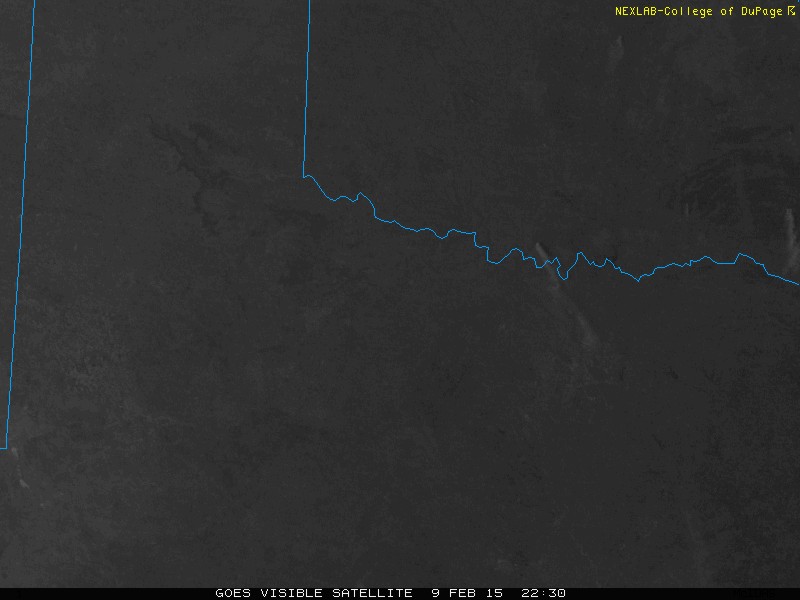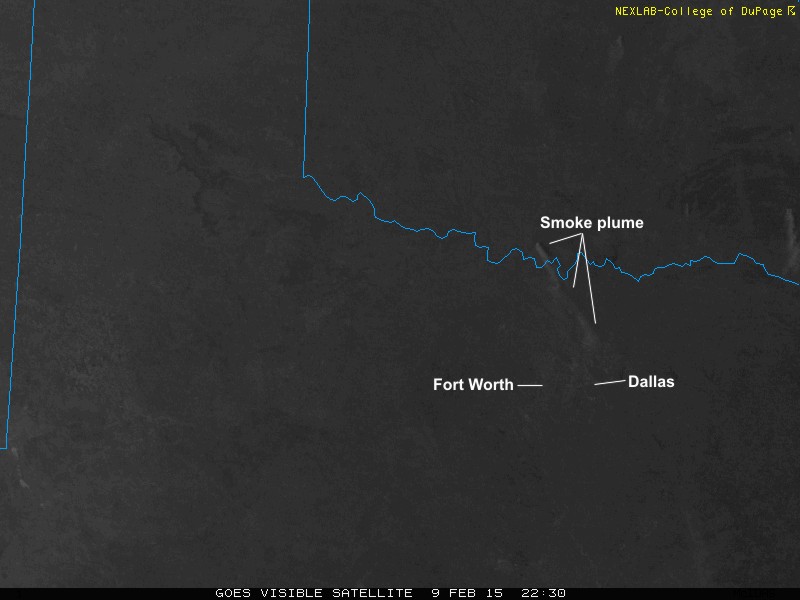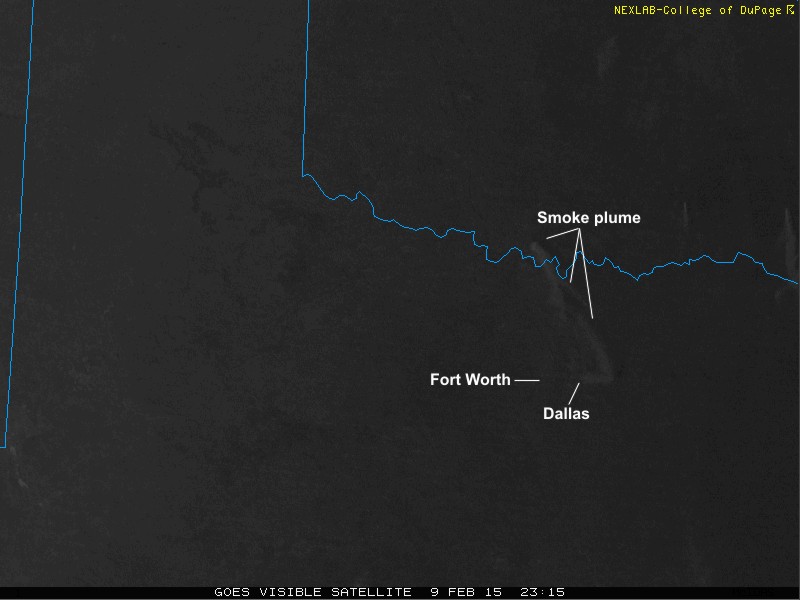Forecasting winter weather is extremely tricky as there are MANY variables which come into play. Temperature fluctuations by a degree or two can have a huge impact on the amount and type of precipitation that may fall in a given area. This graphic, courtesy of the National Weather Service, briefly explains the differences in winter precipitation.
As sleet was falling around the majority of the Metroplex today, let's take a closer look at the atmosphere and see why this was so. To this end, let's bring up the sounding for the DFW area.
As I've eluded to numerous times in previous posts, a sounding is a graphical representation of the cross section of air starting at the surface and going as high as 15 km. The red line represents the observed temperature and the green line is the observed dewpoint. Also plotted (but not as important for this post) are wind speed and direction. Due to the proximity of the red and green lines in the bottom half of this sounding, it's reasonable to assume that there is some kind of precipitation going on. Why? When the temperature of air drops to the dew point, the air has cooled sufficiently to condense the water vapor present into water.
This next picture is zoomed into the bottom 9 km of the atmosphere. I've also noted (in light blue) the 0 degree temperature line. Note that this line isn't straight up and down - rather it's skewed to the right. Incidentally, this is why this diagram is also called a Skew-T (skewed temperature). This line becomes vitally important when looking at winter precipitation!
Starting at the 6 km altitude and moving downward, the sounding can be looked at in 3 sections. This will help us trace the precipitation path and determine its type.
6 km -3 km: This layer is most certainly precipitation as the temperature and dew point lines are nearly on top of each other. However, because all of this layer is below freezing (to the left of the 0 degree line), the precipitation being generated is most likely snow.
3 km - 1.5 km: The temperature and dew point lines are still very close which indicate precipitation. But this time, the entire layer is to the right of the 0 degree line. In other words, any snow falling through this layer is warmer than freezing and thus would be melting.
1.5 km - surface: As the water droplets continue to fall from a height of 1.5 km, the temperature once again drops back below freezing. Due to the thickness (height) of this layer, it seems likely that there's sufficient time for them to refreeze into sleet (ice pellets). If this layer had not been as deep, the next likely precipitation type would have been freezing rain.
A relatively rare phenomenon known as thundersleet also occurred today. Thundersleet is nothing more than sleet coming out of a thunderstorm. But how can there be thunderstorms when the surface temperature is below zero? In order to have a thunderstorm, you generally have to have 3 ingredients: moisture, instability and lift. I've already gone over the moisture component, so let's talk briefly about stability. Stability is a measure of the atmosphere's tendency to encourage or not encourage vertical motion. Let's take another look at the DFW sounding from this morning:
I've outlined what is known as a stable layer of air. Look at how the temperature rises with height. In other words, the air is getting warmer the higher you go within this layer. This means that air in the lower portions of the layer are colder and will not have a tendency to rise. This is called stable air. Above the stable layer, the temperature decreases with height. When you have cooler temperatures above and warmer air below, air has the tendency to rise and is therefore called unstable air. (Technically, this is called conditionally unstable air but there this should suffice for this post). As thunder comes about from convective (i.e. rising/sinking) motions of air, all thunderstorm activity would have to originate above this stable layer.
With me so far?
The last thunderstorm ingredient - lift - is a bit more complicated. In order to get parcels of air to form into thunderstorms, you need some kind of lifting mechanism. Typically this can be in the form of cold front or warm front. For this article, the lifting mechanism isn't important. However, the key is to look at the parcel after it has been lifted to see if it now stable or unstable.
I'm going to focus on the section above the stable layer as noted previously.
I've zoomed into this section of the sounding using another website.
What's cool about this website is that you can "lift" a parcel of air simply by clicking somewhere along the temperature curve. When I did this at a particular height (482 mb*), something interesting showed up.
(*mb refers to millibars - or atmospheric pressure - which is directly related to height in the atmosphere. The lower the millibar number, the lower the pressure and thus the higher in the atmosphere.)
When a parcel of air at the 482 mb level is lifted it technically becomes warmer than it's environment. Remember then what happens? It rises! It is this convective process that leads to storms and thunder! The lifted parcel's temperature is shown as the purple line in the image above. See how the parcel is warmer than the environmental temperature (red line)? This means that all along this pacel's ascent path it's rising due to the instability of the air. It eventually meets up again with the environmental temperature at which time it would stop rising. The area between the purple and red lines is called CAPE (Convective Available Potential Energy) and is a measure of how strong a thunderstorm can be. In this particular example, the CAPE value wasn't very strong and thus the thundersleet was not very widespread. It's also interesting to note that the 482 mb level wasn't the only height which generated CAPE values. There were other lotions where CAPE was present, but at lower amounts.
This was the end product of all the processes I've just discussed: Lightning (and thunder) as a result of elevated thunderstorms which produced snow that melted as it passed through a warm layer of the atmosphere and ultimately refroze while going through a subfreezing section of air before hitting the ground as sleet.


















